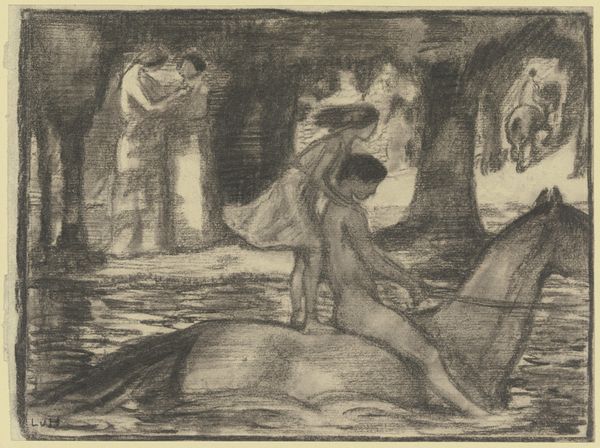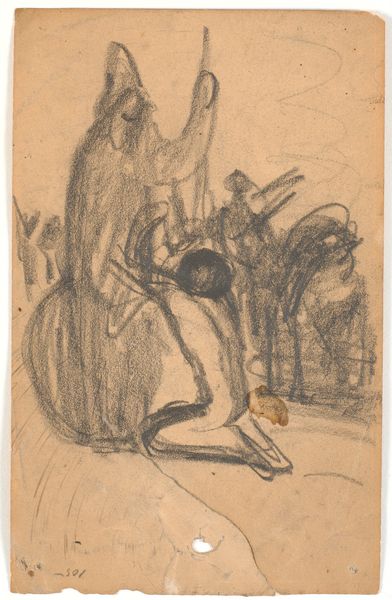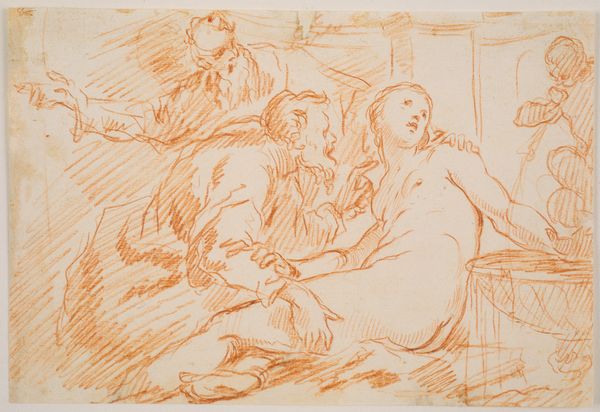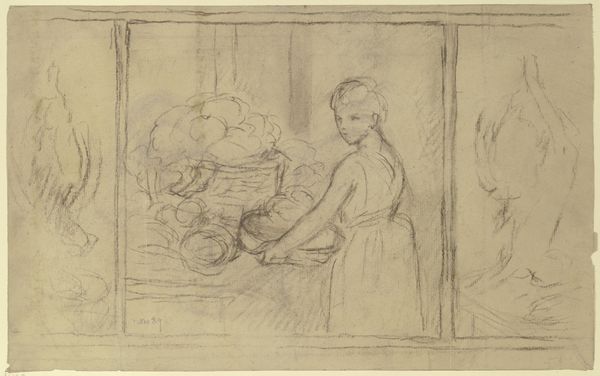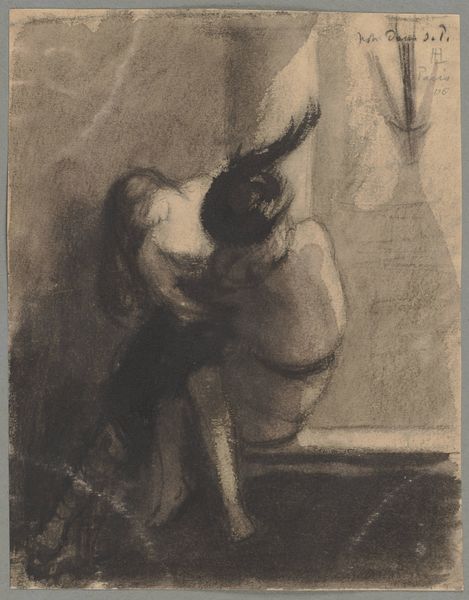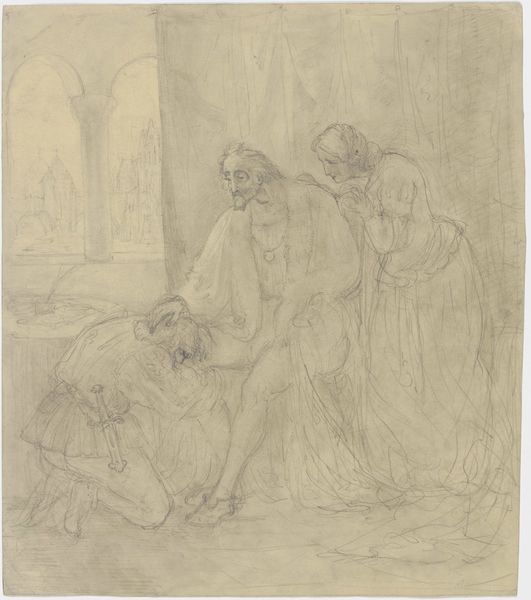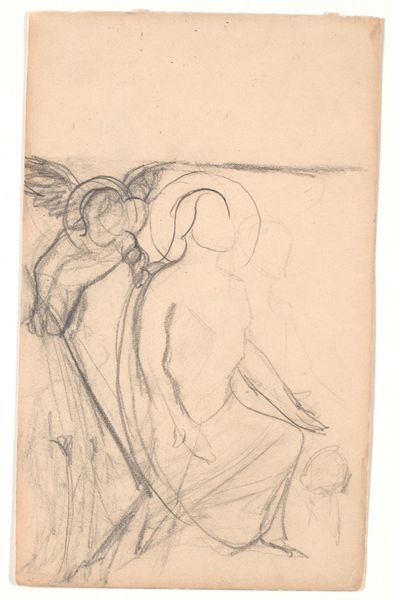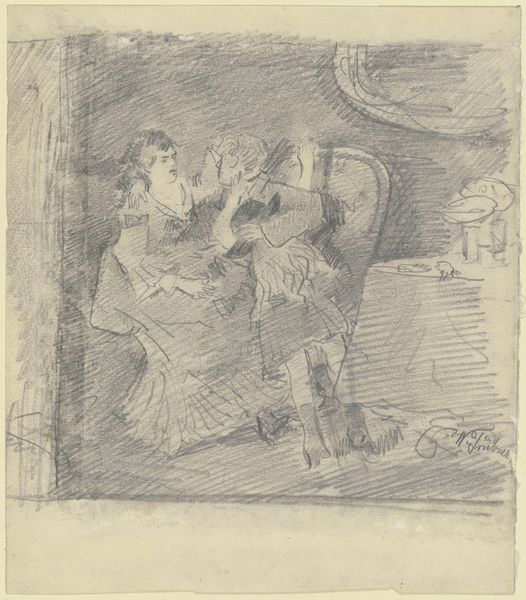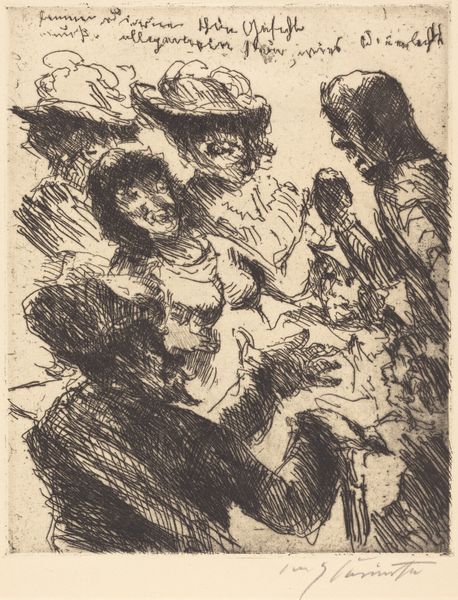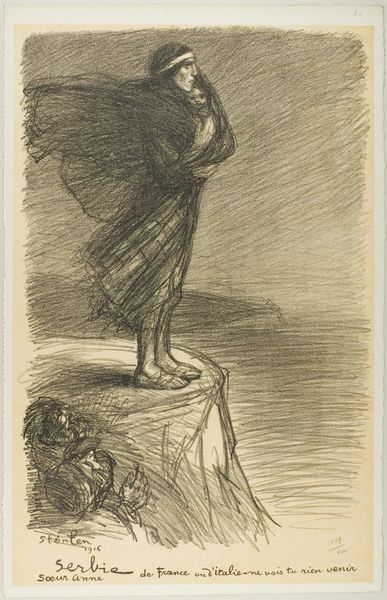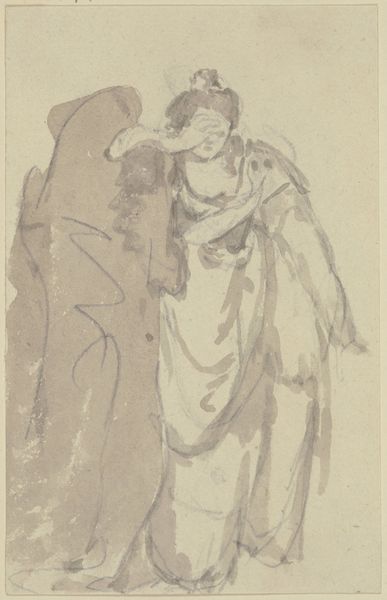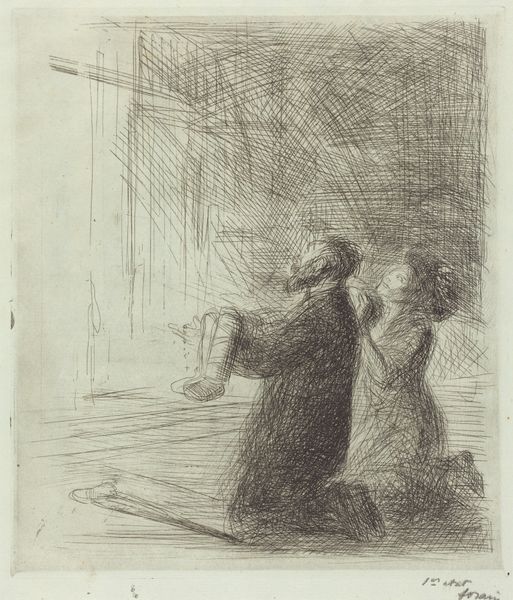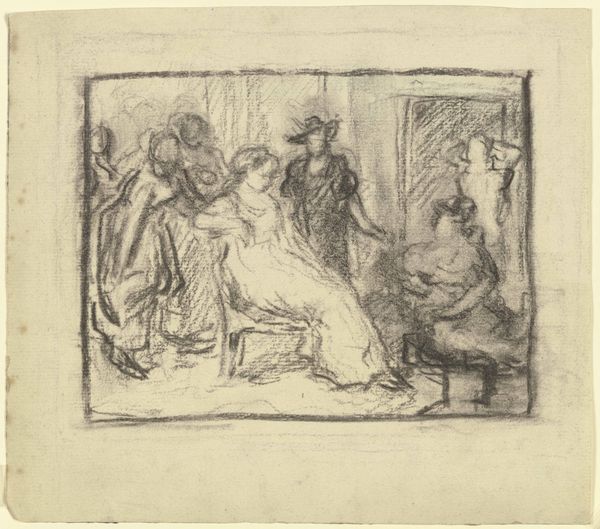
drawing, dry-media
#
drawing
#
figuration
#
dry-media
#
symbolism
#
history-painting
Dimensions: sheet: 21.27 × 13.34 cm (8 3/8 × 5 1/4 in.)
Copyright: National Gallery of Art: CC0 1.0
Curator: Elihu Vedder's drawing, "Study for 'The Fates Gathering in the Stars'," was made sometime between 1884 and 1887 using dry media. It offers us a glimpse into his process as he prepared for a larger painting on the same subject. Editor: My first impression is one of haunting monumentality. The figures, though roughly sketched, possess a weighty presence, almost as if emerging from primordial shadow. Curator: Absolutely. The symbolism is potent. Vedder was deeply interested in mythological narratives, and the Fates are figures laden with cultural significance. Their presence evokes destiny, inevitability, the threads that bind human lives together. Editor: The limited palette—charcoal and chalk on toned paper—amplifies that sense of somber power. See how Vedder uses stark contrasts of light and dark to define form and create dramatic tension. The composition is fascinating; the arrangement of figures establishes a clear hierarchy. Curator: Precisely. The standing figure, possibly Atropos holding her torch, stands erect, seemingly unyielding to fate. Her upright stance symbolizes immutability, and then we have the seated, mourning figures which emphasizes a lamenting posture that signifies the emotional weight carried. Editor: The surface itself, the texture of the paper and the visible strokes of the charcoal, becomes part of the narrative. It's a raw, unpolished statement. Note how it affects the semiotic value. Curator: Indeed, the sketch-like quality feels appropriate to the subject. These are not goddesses in their triumphant glory but contemplators of destiny and mortality. Their unfinished appearance underscores that the future, and perhaps fate itself, remains incomplete, unwritten. The work is evocative. Editor: Yes, evocative. I am particularly struck by Vedder’s success in building such tangible presences with minimal elements and an undercurrent of existential meditation. Curator: Ultimately, Vedder transforms the personal inquiry of creativity into an emblem for contemplation of humankind.
Comments
No comments
Be the first to comment and join the conversation on the ultimate creative platform.
